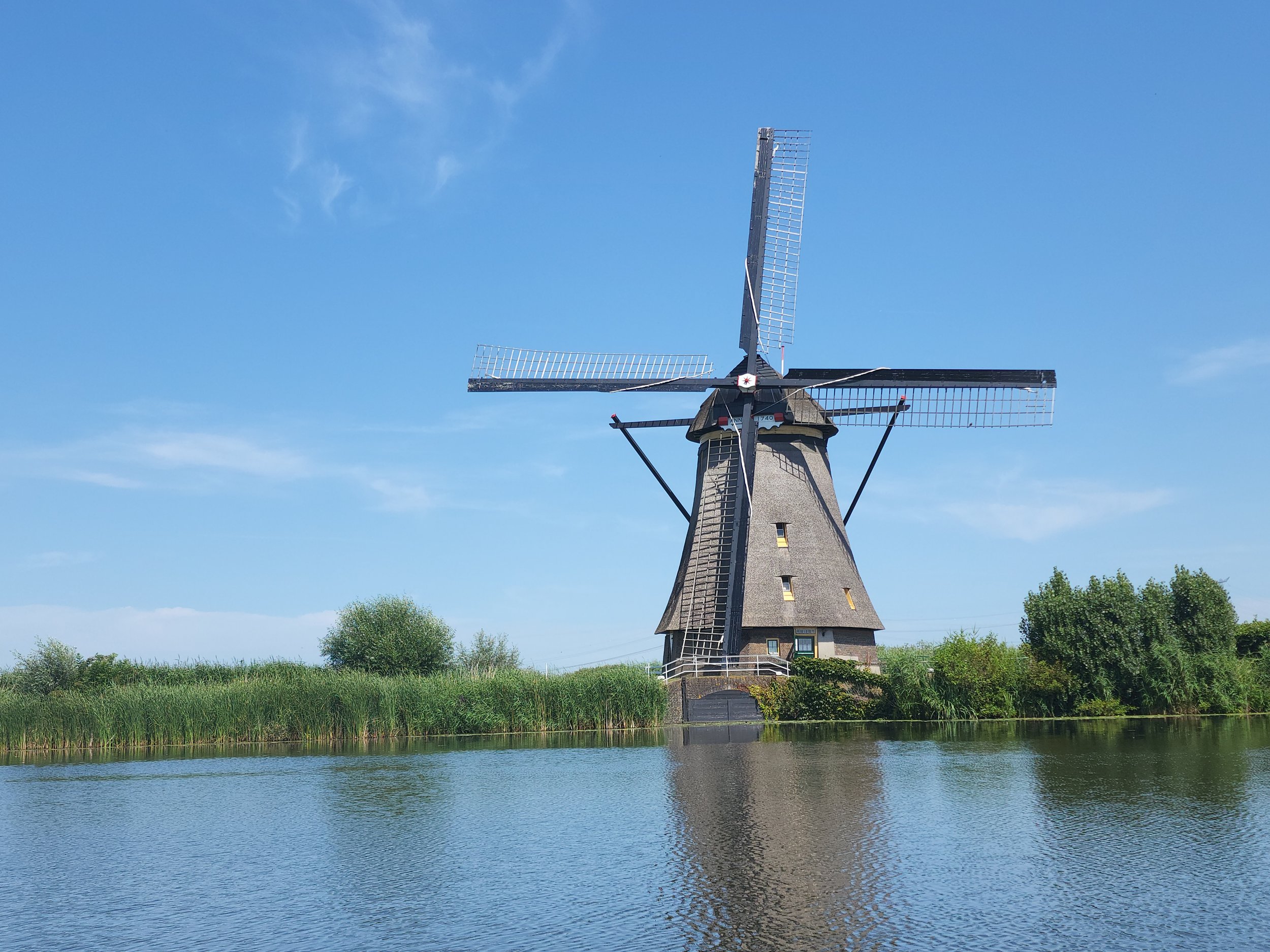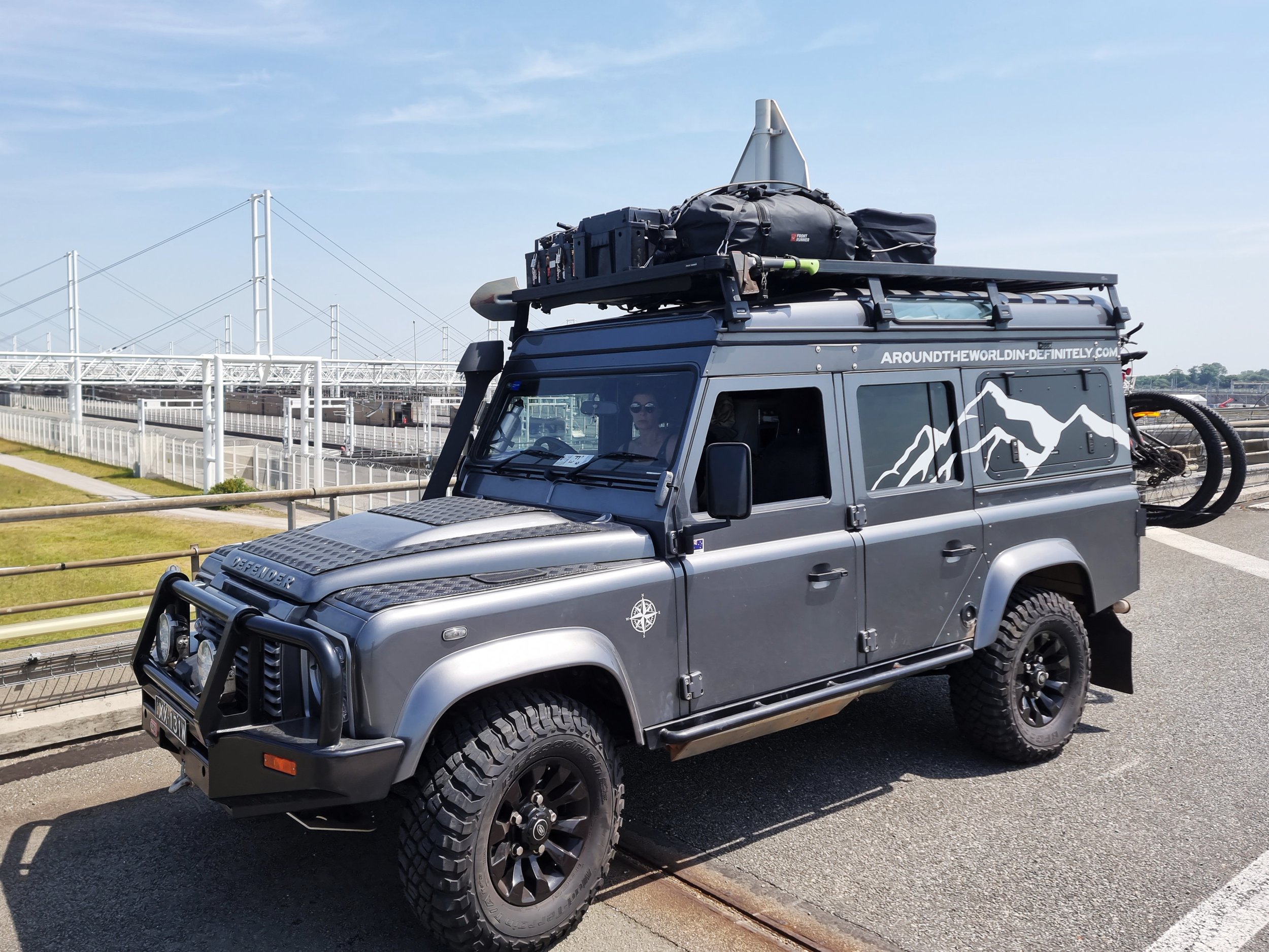Back Into Europe
/Our time back in the UK has flown by. After a three-week gruelling romp through the peat bogs of the Pennine Way we decamped to North Wales and crashed out at a rural Airbnb. What a contrast, to sit inside looking out at the beautiful but wet countryside, smug in the knowledge that our rucksacks had been demoted to the spare room.
There was still plenty to do though, as we had arrived with a job list for Bob that we were keen to get done in a country where we could speak the language. We were surprised to find that most businesses we spoke to had a wait list that ran through until 2024 but sufficient pleading (and wallet opening) eventually resulted in Bob getting a service and new tyres. He also had his body armour and rock sliders resprayed and is now looking quite spiffy. The other niggle that we have had for nearly 12 months is our Pico system failing to read the water level of the two tanks that are mounted under the chassis. Thanks to Adam at AW Van Conversions, we eventually got to the bottom of the problem, both compression senders were registering as an earth rather than a positive into the module, we think as a result of ice forming in the units causing the wires to touch. Although we weren’t able to replace the units there and then as we are using Enerdrive sensors which are only available in Australia, we have been able to order some replacements and are hoping they will arrive in Portugal around the same time as us.
Yes, the weather in the UK is definitely suggesting the fast approach of winter and therefore time for us to start thinking about getting back into Europe.
london eye
First though, we had some friends to catch up with, all of whom are conveniently located in the South of England making it easy to call in on our way down to the coast. And, as we were so close to London we decided to pay a visit to our old stomping grounds and see what had changed since we left over 25 years ago. Well.. the City is almost unrecognisable! We could actually see London rather than peer at it through a gloomy smog. The expensive low emissions and congestion charges have definitely deterred many vehicles from the centre and the result is a clean and accessible capital. Two hours on Google eventually revealed perhaps the only uncovered parking lot within a 5 mile radius of Trafalgar Square which, if you are thinking of driving your own high vehicle into the centre, is at the back of the Ibis Styles, Bankside and there is also a nearby aparthotel which at less than half the price of some of the surrounding hotels is handy. We were now ready to be tourists in one of the best Cities in the world.
tricky to park outside harrods
When we lived and worked in London our preferred mode of transport was by bike and despite both of us having had near death experiences during that time we were worryingly keen to recreate the thrill of battling with the chaotic traffic. Not a chance. With cycle lanes everywhere, fewer vehicles on the road and recently introduced speed limits of 20 mph (30 kph) throughout, we cruised around the streets with surprisingly little effort. We took in all the familiar sights as well as those that have sprouted up in our absence which included admiring the City over eye-wateringly expensive cocktails on the 32nd level of the Shard, the re-development of Borough Markets which has been done so well and the London Eye. A bit of shopping on Oxford Street, a West End show and a quick visit to Buckingham Palace to congratulate the new King and we were done.
A friend once told me that unpleasant news is best served in a sandwich so…..
our best friend
….. Leroy is no longer with us. He arrived into Adelaide airport, all the way from New Zealand when he was just 10 weeks old. The nature of our lifestyle in Australia meant that I worked at home and Leroy enjoyed growing up in a spacious and sociable environment surrounded by our dog loving friends and lots of other animals. Two and a half years on the road has meant that we have been a tight unit and I think it would be fair to say that there is not much about Leroy that we don’t know. Being a bit gormless, he has brought much entertainment and hilarity to our adventures, but for a little while now, he has been showing some differences in character. He had become more detached from us, increasingly reactive to noises and people around him and generally looked a bit confused. All this resulted in volatile displays of explosive energy which when coming from a 50kg Rotti are difficult to manage at best and traumatic at worst. Both of us have been aware of the changes and we thought that walking the Pennine Way would be a good opportunity to talk it out and see how we were both feeling. Unfortunately, over the course of the walk, his behaviour continued to deteriorate and we acknowledged that he was bringing a lot of stress into our lives. For us travelling, this is not what we want and so, as difficult as the decision was, we have had him put down. What a loyal and valued member of our team he has been for a considerable time and we are so grateful to have been able to share some of our journey with him. It is with heavy hearts that we close this chapter and he will not be forgotten.
portsmouth to st malo ferry
Rather than taking the Folkstone/Calais shuttle over to France, we opted for an overnight passage from Portsmouth to Saint Malo with Britannia Ferries. The high standard of the dinner buffet left us in no doubt as to the ownership of the ferry line and after a good sleep in one of the many cabins we were once again on French soil.
Saint Malo is a port city in Brittany, the old town was once a stronghold for King approved pirates and is still surrounded by tall granite walls. Arriving at 8am in half light, we went in search of pastries and coffee before a quick whiz round on the bikes and our long drive down to Portugal where we planned to meet some friends on holiday from Australia.
brittany coast
The Brittany coastline is dramatic with plenty of walking trails set high on the cliffs offering spectacular views of the numerous sandy coves and small bays dotted with bobbing fishing boats. The areas along the coast were quite gentrified which made for easy travel despite the rain which rather dampened our nights of wild camping. Many of the campsites had shut up shop for the season but the lack of tourists was no bad thing, particularly at Carnac where we were permitted to explore without the customary guide.
carnac megaliths
As embarrassing as it is to admit, neither of us had ever heard of Carnac before, let alone knew that it has the largest megalithic ensemble of its type in the world. Mostly within the Breten municipality of Carnac, spread over an area of around 3km, are a collection of over 3,000 prehistoric standing stones dating back to between 3300-4500 BC. Considerably older than Stonehenge, a relative newcomer on the scene between 3000-2000 BC, there is still no widely accepted theory as to their purpose. Many of the stones are in alignment which might support the myth that a Roman legion had been turned to stone by Merlin the wizard, whose grave happens to be conveniently close by. Needless to say, this isn’t the true origin of the stones, if only due to the fact that the stones pre-date the Roman Empire by at least 3,000 years. The stones range in size from 0.5m tall to 6m, each weighing between 5-10 tonnes. The superhuman effort of hauling and erecting them must surely mean they held enormous significance but, to date, their true purpose remains unknown.
san sebastian town hall
Moving ever south, it was inspiring to see so much support for breast cancer awareness, the colour pink appearing in many towns and villages heralding the arrival of Pink October. A theme which continued all the way into Basque country and onto the steps of San Sebastian Town Hall.
From San Sebastian we climbed up and over the Cantabrian mountains, a range which extends over 300km, parallel to Spain’s north coast. We were now in the region of Castilla y Leon, up on the central plateau, which is the northern half of a still-larger interior plateau the Meseta Central, an area that occupies almost all of central and northern Spain. A land-locked, elevated plain, surrounded by mountains. Castilla y Leon is the largest region of Spain and, according to Lonely Planet one of the least explored. Driving through this mostly treeless and barren landscape, it wasn’t difficult to see why. The towns and villages were few and far between and many seemed to have been abandoned leaving the buildings desolate and shuttered up. Our surroundings were unchanging and we seemed to drive forever through torrential rain and bitterly cold wind with just the occasional tumbleweed for company. We later learned that we had driven through during Storm Ciaran which caused widespread damage throughout the region.
salamanca university
It was a relief to reach the ‘Golden city’ of Salamanca, so called for its extensive use of sandstone in the construction of its elaborate buildings. Something of an oasis amid its featureless surroundings, the city is renowned for its university which was founded by King Alfonso IX in 1218 and is one of the oldest institutions in the world in continuous operation. A long list of celebrated alumni which includes Don Quixote author Miguel de Cervantes, Spanish conquistador Hernando Cortes and Christopher Columbus, together with its teaching of the purest form of Spanish, attracts foreign language students from over 70 countries.
We enjoyed wandering around the cities compact centre despite the continuing rain but excited to progress south with the Portuguese border now only 120 km away.











































